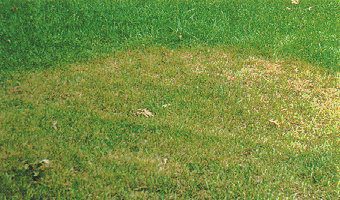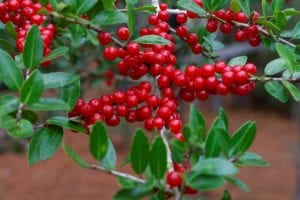With every new gardening season comes a fresh a crop of problems. Today we are highlighting four problems that you are more likely to encounter during the fall garden season. Oh, and we’ll offer solutions too.
Problems and Solutions for Fall Gardens and Landscapes
Look under the leaves of your plants for eggs and tiny caterpillars (look close, they can blend in.) Inspect for chew holes, or in cases of progressed infestations, skeletonized foliage. Control is most effective when caught early. Options are: hand pick cabbage loopers from plants, or spray with Bt (Bacillus Thuringiensis). Read label for directions and information on if repeat applications are warranted.

Brown Patch in our turf really starts to show up when temperatures become milder. Increased fall rains can contribute to this disease as well as watering with your sprinkler system at night. Making adjustments to your systems to only water in the morning hours can greatly help reduce the chance your lawn will get this fungus.
Brown Patch presents as brown circular areas that usually have a little bit of yellow around the edges. Sometimes the inner part of the circle starts to re-green a little (where it looks kind of like a donut). Blades rot off, but runners are intact.
If your turf tends to struggle with this problem annually, this is your reminder to treat with a preventative spray or granular product like F-Stop or Nitro-Phos Fungicide now before the fungus appears. These products are not always as effective controlling the fungus once the damage presents itself. In general, if left alone, the fungus will run its course and when spring arrives with warm weather again, the grass blades will fill back in.
(Image courtesy Cornelledu)

Another problem that we’ve had some customers asking about recently this fall is browning and the death of sporadic holly limbs. This could actually be a problem stemming from multiple reasons.
Most likely it is drought damage from the incredibly hot and gaspingly dry summer we just made it through. On the other hand, it could be damage from bagworms that twisted their webs around young limbs, girdling, and basically strangling them.
The solution to either problem? A simple one really. Trim out the damaged limbs and take the best care of your holly that you can through fall and winter and it will most likely bounce back.
Care includes: avoiding heavy pruning til the dead of winter (just trim the dead branches out), keeping well-watered through fall and early winter (taking in account rainfall so you don’t overwater), and offering a nitrogen fertilizer if you didn’t do so in spring.

Don’t cause a new problem by forgetting to make adjustments to your watering schedule for plants that you bring inside to overwinter. They won’t need as much water as they did when they were living outside in the warm weather.
Overwatering can cause problems like root and crown rot, or the likelihood of a fungus gnat infestation. Yuck! Feel the soil regularly to learn when you need to water and treat fungus gnats with a combination of yellow sticky traps to catch the adults along with either a Neem Oil soil drench or Mosquito Bits soil drench (follow instructions on label) to kill the eggs and larvae.

As with any problem in the garden or landscape, it’s easiest solved when caught early. You’ll be outside more often anyway now that the temperatures are much pleasurable, right? No problem!
~The Happy Gardener, Lisa Mulroy

